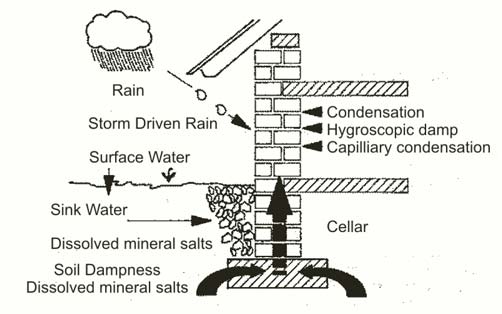Damp Proofing Repair Services in Gauteng
At Ludmar Damp & Crack Repair, our primary commitment is to address and rectify damp damage in both residential and industrial properties. Strategically situated in Kempton Park, we are ideally positioned to serve the entire Gauteng province.
Our comprehensive service portfolio includes:
Defect Reports and Expert Advice:
- We offer in-depth defect reports, meticulously assessing lateral damp and rising damp damage.
- Our team provides professional guidance on the necessary repairs, along with a detailed estimate of the associated costs.
Specialized Contracting Division:
- Our dedicated contracting division excels in repairing both rising damp and lateral damp damage with a high degree of proficiency.
Empowering the DIY Enthusiast:
- For those who prefer a hands-on approach to addressing damp-related concerns, we proudly recommend our proprietary line of repair products. These products enable homeowners to efficiently damp-proof their properties.
At Ludmar Damp & Crack Repair, we prioritize precision, professionalism, and customer satisfaction. Allow us to safeguard your property against the perils of dampness. Contact us today to discuss your specific requirements and embark on a journey toward a dry and secure environment.
What is the cause of damp damage?

Causes Of Damp Damage
Understanding the causes of damp damage is essential for effective building maintenance. Damp issues primarily arise due to the inherent porosity of building materials. Pores in these materials serve as pathways for the infiltration of water and other potentially harmful substances. Rising or lateral damp can transport water-soluble salts and acids into the masonry, which then accumulate, especially in areas where evaporation occurs.
Types of Damp Damage
The initial signs of damp damage often manifest as paint blistering and efflorescence, leading to the gradual breakdown of Calcium Silicate, a key binding material in cement stone. If left untreated, this damage can progress to the point where brick mortar deteriorates, turning into loose sand and becoming non-load bearing.
Main Causes for Rising and Lateral Damp Attack
1. Rising Damp:
Capillary action can draw dampness into the brickwork of a structure when the required damp course is either missing, defective, or bridged. Older buildings might have used maltoid, which degrades over time. Unsuitable cement combined with highly acidic building and plaster sand can exacerbate the issue. In many European countries, regulations stipulate the use of acid-resistant cement for below-soil-level construction to prevent this problem.
2. Lateral Damp:
Elevated external soil levels often lead to lateral damp damage. Moisture from adjacent soil can freely migrate through the brickwork due to unequal air pressure and the absence of a suitable vertical damp barrier. This allows water-soluble minerals (cement poisons) to be transported, settling in the evaporation zone on the house’s interior side. The initial installation of an agricultural drain and a cementitious tanking system can prevent significant damage caused by mineral salt accumulation.
3. Descending Damp:
Descending damp is commonly caused by rainwater ingress through uncapped parapet walls, loose chimney and parapet flashings, defective flat roof covers, loose sky-light surround seals, and blocked undersized drainpipes on flat roofs, resulting in rainwater ponding above the waterproofing.
Cosmetic and Structural Damage Caused by Mineral Salts
One of the most challenging aspects of repairing damp-damaged structures is addressing the presence of mineral salts. To successfully repair such structures, identifying and addressing these salts is crucial. Some mineral salts include:
1. Calcium Nitrate – Very Aggressive.
2. Calcium Sulphate – Aggressive.
3. Magnesium Sulphate – Aggressive.
4. Potassium Chloride – Aggressive.
5. Sodium Sulphate – Very Aggressive.
6. Sodium Chloride – Lightly Aggressive but very Hygroscopic.
7. Calcium Chloride – Lightly Aggressive but very Hygroscopic.
Please note that the list above is not exhaustive, and multiple types of mineral salts can be present. Neutralizing or converting water-soluble salts in heavily salt-loaded brickwork is challenging. In such cases, reducing the moisture content to ambient levels is the best approach, rendering the mineral salts dormant.
